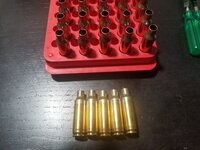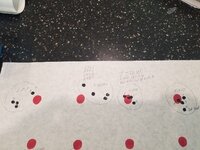Grapevinedave
FNG
I've searched for a thread about necking down 300 Saum brass to 7 Saum and didn't find much and wondering what others have as a process. The main thing I see is the difference in brass length with the 300 being shorter. I have some 7 saum brass but have a couple hundred 300's. Should I make them all the same length after fire forming. Another question would be is it necessary to neck turn the brass to fit the chamber? Have never necked turned brass, but not opposed to buying the supplies to do that. Any help with this process would be much appreciated.





